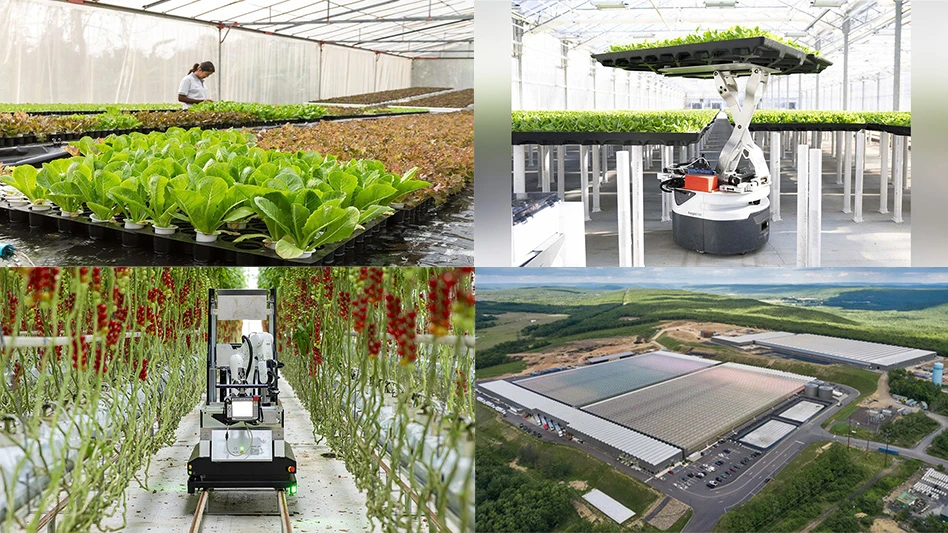
An essential part of the growing process is pollination, as it directly leads to the formation of fruit that can be sold at stores and markets. Without pollination — the transfer of pollen from the stamens to the pistil on a flower — growers wouldn’t have any produce to sell.
There are also a number of ways for plants to be pollinated. One option is for growers to transfer pollen from one crop to another by hand by using methods like gently shaking the plant to move pollen or using a small paint brush to transfer pollen between several blossoms. But those methods are time-consuming and labor-intensive. Animals such as bumblebees, hummingbirds, moths and butterflies can all pollinate plants, although not always in all environments.
Amongst pollinators, though, bumblebees are one of the most effective, and can be used in a greenhouse. They also are easy to control and manage for growers. And when compared to hand pollinating, relying on bees takes less time and is more cost effective in regard to labor costs.
Bee basics
According to information on pollination from Koppert Biological Systems published on their website, bumblebees can visit twice as many flowers per minute compared to other bees and can carry heavier loads of pollen over longer distances. Additionally, their large size compared to other bee species allows them to make better contact with the stamens and pistils than their smaller counterparts. And perhaps most importantly, bumblebees thrive in a variety of conditions, as they can work in temperatures as low as 10°C, in strong winds, light rain and in low light intensity levels.
Most bee species are also capable of pollinating a variety of crops, including tomato, eggplant and strawberry. When that happens, it can directly lead to larger yields.
“Lots of the time, when bees pollinate multiples sources, it will make the fruit develop larger,” says Dr. Vera Krischik, an entomologist at the University of Minnesota.
Greenhouse growers don’t have a wide variety of species to pick from, and bringing in native bees from the outside isn’t an option. For most options, bumblebees standout as better than most because they showcase the vibrating behavior (more commonly referring to as “buzz pollination”) that is necessary to pollinate crops like tomato and eggplant.
When bumblebees latch onto plants to pollinate, their jaws move hundreds of times each second. As a result, they have to hold on or else be pushed away.
“[Buzzing pollination] sounds like a bee is giving you a raspberry,” said Dr. Stephen Buchmann, a professor at the University of Arizona, in a 2013 New York Times article. “The bees are turning themselves into living tuning forks.”

Growing specifications
Hives should be placed in protective boxes that are ¾ of the way filled with bumblebees and evenly spaced out in a greenhouse with the hive sitting a few feet above the ground. A checkerboard pattern is a common and effective method for spacing out the units. If placing hives amongst plants isn’t an option, the best alternative placement method is to space the units evenly along the perimeter of the crop. The number of units needed depends on the size of a grower’s yield and it’s best to do research ahead of time before committing to bumblebees as a pollinator. For reference, a small hive of 45 to 60 workers that covers up to 5,000 square feet typically costs around $160, per Koppert. Hiring a beekeeper also isn’t a necessary cost for most operations, as the bees will seek out flowers on their own when placed properly, and bumblebees won’t produce honey.
Unlike outdoor hives that can last survive over the course of a few years, greenhouse bee hives typically last between 10 to 12 weeks, although some will expire after 6 to 8 weeks. As a result, there is an added cost and other species — namely honeybees — live longer in greenhouses on average. But bumblebees stand apart from the rest because they are more potent pollinators than other options. Most notably, honeybees cannot buzz pollinate, making them less effective with certain crops commonly grown in greenhouses.
To use tomatoes as an example, a bee pollinates the plant’s flower by biting it and making it vibrate. Within four hours, the bite mark turns brown. That single bite typically results in the transfer of enough pollen for the flower to be pollinated and setting to occur.
Basic safety
In addition to knowing where to place the boxes with the bumblebee hives, it is also important to know how to be safe around bees. According to Koppert, only worker bumblebees and queens have stingers, and the stinger is a weapon for defense. When you get stung by a bee, a small amount of venom is injected into your body. That venom causes you to feel a short, but severe, pain that swiftly fades away. In roughly 1 percent of all cases, an allergic reaction to bee venom occurs.
The good news, however, is that bumblebees rarely sting, and risk can be reduced by avoiding any actions that may provoke them. When working around bees, be calm, don’t wave your arms at them or grab ahold of the hive. Bumblebees can react aggressively to odors such as alcohol, perspiration and perfumes, so you may want to create guidelines for laborers about wearing perfume or used scented lotions while working in the greenhouse. They are also attracted to the color blue and can be aggravated by the oxidized materials in rings, bracelets and watches. If and when you need to visit the hive’s box to close it ahead of a scheduled chemical application, it is best to do so early in the morning prior to sunrise when the hive is least active.
The risks, however, are minimal and protective clothing is readily available. Bumblebees also don’t die after stinging a person, which isn’t the case with honeybees and other species, but it’s better to avoid causing them to feel threatened.
Everything considered, bumblebees are an effective, trustworthy pollinator. For more information, check out “Pollination powerhouses” (bit.ly/29YfGQH) from the August 2015 issue of Produce Grower.

Explore the August 2016 Issue
Check out more from this issue and find your next story to read.
Latest from Produce Grower
- Cox Farms partners with Feeding America to tackle food insecurity
- Ethical labor practices supported by third-party certification programs
- Spotlight on strawberry production
- Relationship building
- Growing small to trial leafy greens
- IFPA expands team, launches strategic plan
- Downy mildew
- Thought Leaders to Share Insights at Clemson FRESH Food, Packaging & Sustainability Summit





